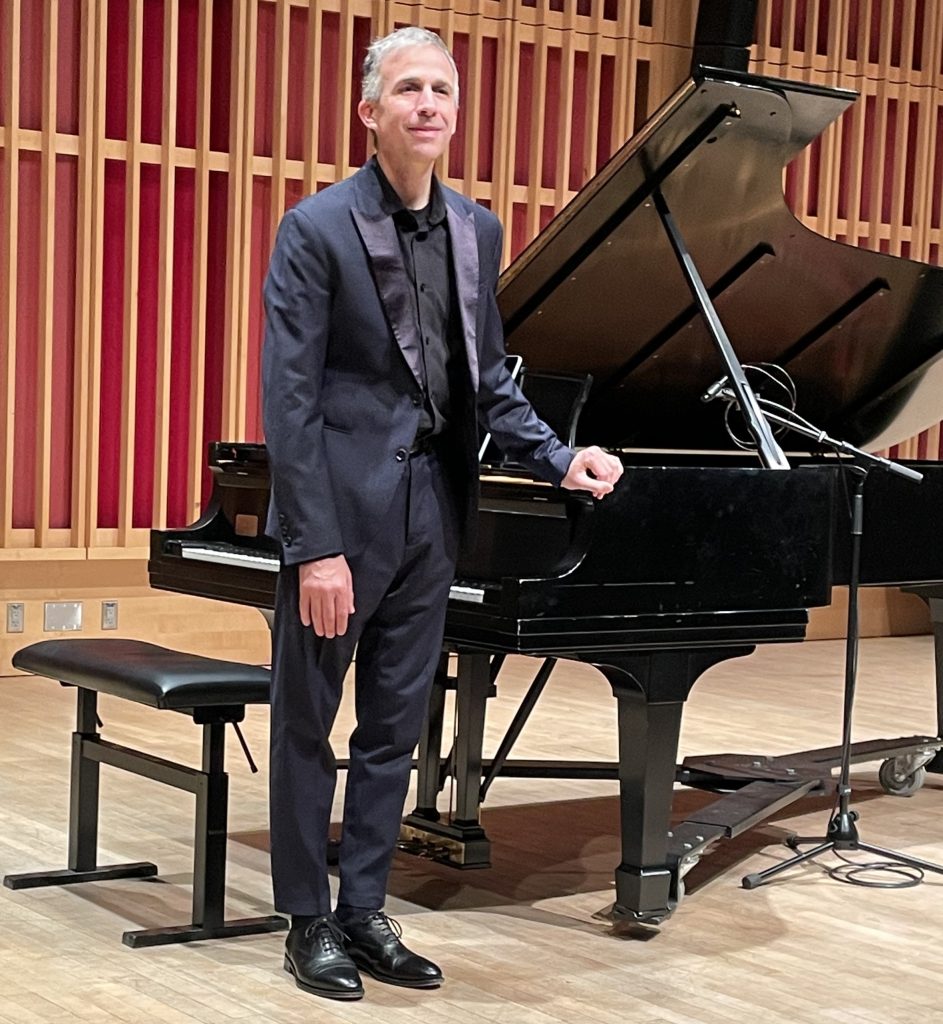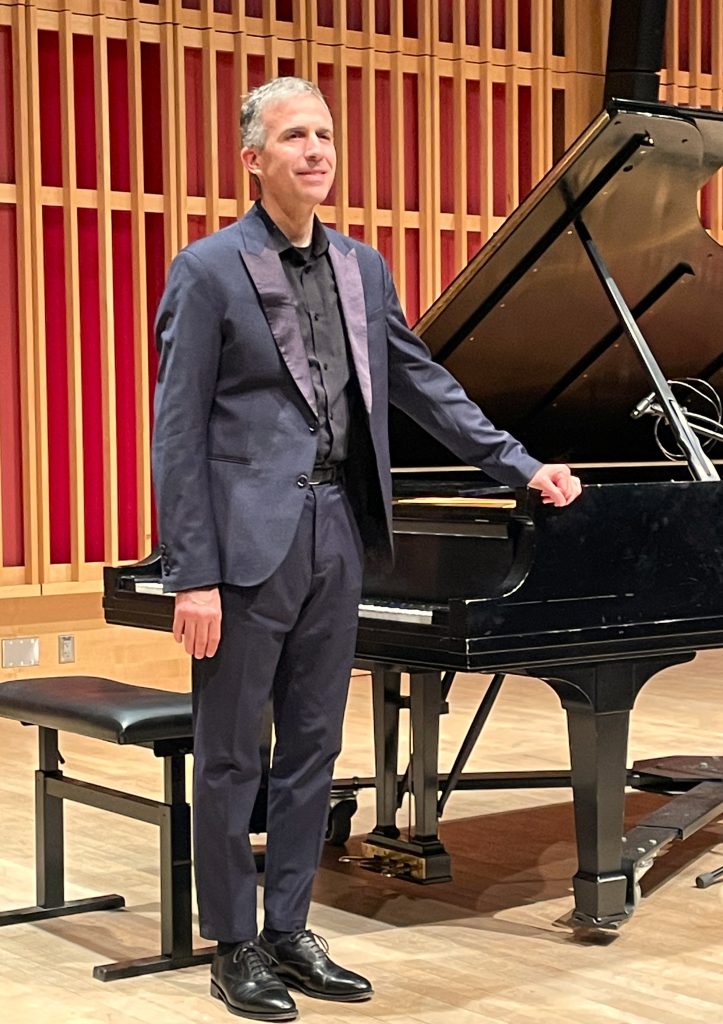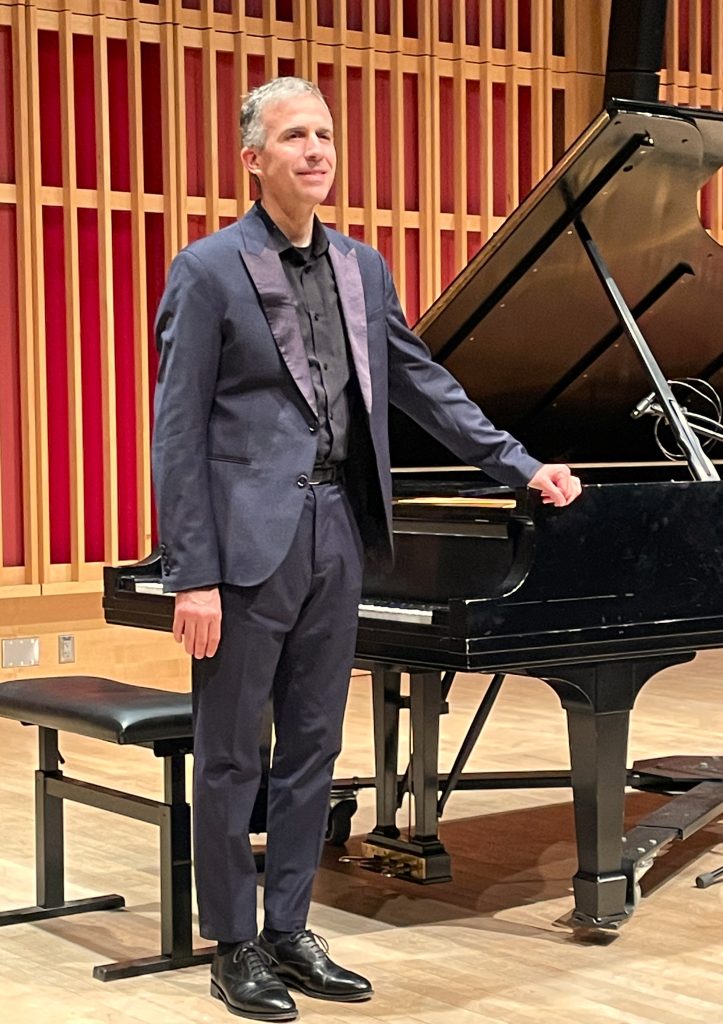
by Kevin T McEneaney
I have heard Benjamin Hochman play once or twice a year for eleven years. This past Thursday evening at Lazló Bitó Hall he performed the complete program of his recently released CD, Resonance. A student of Claude Frank and Richard Goode, this maestro has come into his own, bedecked with modesty and mastery of the keyboard.
Hochman opened with Piano Sonata No. 30 in E, op.109 (1820) by Ludwig van Beethoven composed just after the legal loss of his nephew who had been living with him. He was now battling ulcerative colitis, rheumatism, lung inflammation, occasional fever, consistent headaches, deteriorating eyesight, and profound loneliness. Nonetheless, he worked on the recent commission of his last three piano sonatas (nearly unplayable for most pianists) with profound introspective immersion. These last three sonatas remain famous for their unusual sonorities.
This was the first of his last three scintillating sonatas. He appears to chart the doomed legal courtroom struggle to keep Karl with dignified solemnity. The surprise ending of the first movement records the shock of winning custody of his nephew Karl. The second movement, Prestissimo, announces a happy return to the flurry of work and spontaneous imagination as a refuge where Hochman’s fingers flew with liquid dexterity describing a realm of spontaneous creativity.
The concluding movement swims in an underlying tension, a high-wire double nuance where the bonds of family life ride on waves of conflict that echo with ironic resonance. Here the concluding finale releases a touch of surprise, an ironic echo of the first movement, which is not how this sonata is usually interpreted, yet I think this maestro has it right because it records the fatal, reversal of the courtroom loss of Karl to Johanna. Here is the solemn, haunting, dignified despair of a wounded man who must carry on. Hochman has solved the riddle with resonant aplomb. This is a persuasive reason to purchase Hochman’s newly released Resonance CD (from Avie) as I did.

Ave Christe by Josquin des Prez, the giant of his era who opened the vein of counterpoint at Notre Dame Cathedral, followed. I confess that I prefer Josquin secular ballads more than his innovations in traditional religious music. This work was originally a piece for choir and Hochman played an arrangement by Charles Wuorinen. This more linear, modern work did not capture the rapture that Josquin could achieve. I imagine this composition would be more suitable in an arrangement for the organ.
Shadowlines, Six Canonic Preludes for Piano by George Benjamin (b.1960) followed. This post-modern work was influenced by the eccentricity of Eric Satie. This witty work delivered more angular gymnastics than emotional inflection amid clever resonant echoes.
Pavana Lachrymae MB 54 by John Dowland (1563-1626) with an arrangement by his contemporary William Byrd provided more satisfying emotional resonance. This piano version conjured intimate tragedy and sorrow which offered a prelude theme to his last program item.
Concluding with Piano Sonata No. 31 in A flat, op. 110, the audience was transported back to the transcendental realm. Most performances of this work emphasize the extroverted fortissimo runs, yet here they were slightly muted for insightful resonance. A meditative, ambivalent emotional state was highlighted by the vagaries of compositional inspiration which confessed a bemused state between Beethoven’s public life and delight in private artistry which required a public face and private fate.
The density of the first movement of Opus 109 was repeated in Opus 110 with a more relaxed ambiance, yet the second movement Scherzo runs counter to the Prestissimo of the 109 as if illness and recovery were a whimsical joke. There is lament for mortality along with an arioso-like passage of incandescent beauty which serves as a precedent for the exciting and optimistic fugue of the finale based upon the opening theme of the first movement. There is a sense of satisfaction at having bridged both personal and public life. Hochman’s interpretation forefronts the seesaw of anxiety and achievement in a probing psychological manner that is marvelously convincing.
This was a concert not to be missed, yet if you missed it, then the new CD published by Avie will offer a deeper psychological presentation of Beethoven than any other recording available. In my opinion, these two Beethoven recordings are now the definitive standard.
